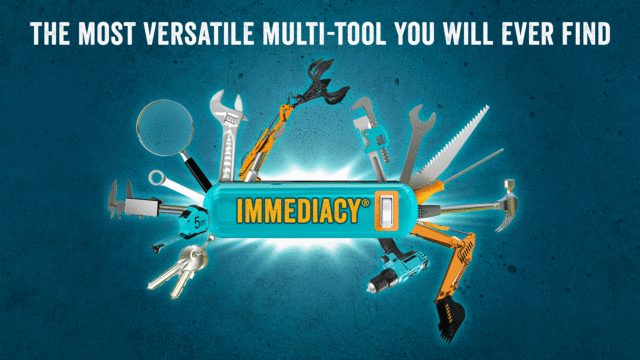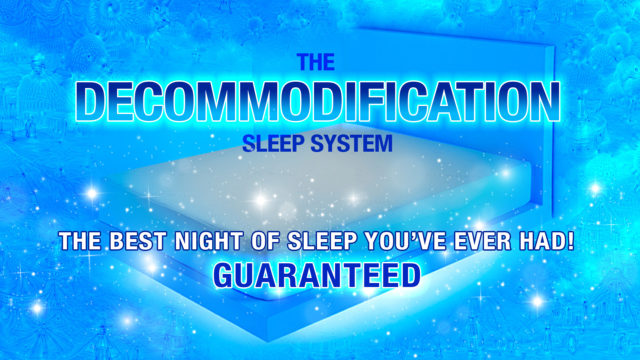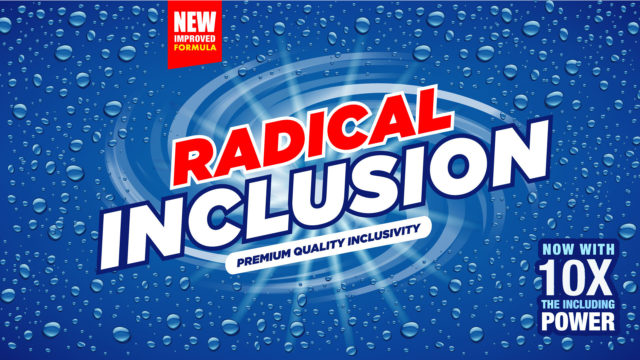
Burning in Europe: Stories of Home
Burners from around Europe gather to teach and learn and to conjure ideas for the future. Burning Man’s 7th European Leadership Summit just happened, and we recorded some conversations for you.
Passionate people from the corners of Europe share with Stuart and kbot what they get from Burning Man culture and what they gift back to it. Hear a cultural spice drawer of stories about how they persevere through politics and pandemics to bring their flavor of Burning Man to their homeland.
Our guests
Baroch – Israel
Erin Kiez – Germany
Gabriel Muscalu – Romania
Linus Höök, Caroline Bergmann, Britta Kronacher – Sweden
Pille Heido – Estonia
Vinegar Joe – Portugal
The image used in the episode graphic includes “Interplanetary Love” by Luke Jerram, 2023
Photo by Chayna Girling
Transcript
BAROCH:
There have been many things that I take with me from the ELS. First and foremost is a very strong sense of connectedness and being a part of a tribe that is making a big effort to stay with all the challenges and all the devastating things that happen in reality, and try to create a better version of reality. A better version of, how do we live here on this planet, and how do we care for each other and see the best of each other?
So this is more as a spirit-wise, or philosophical terms of what I take with me from this convention. It’s worth to believe in people, and it’s very accessible to do good things if you have good intentions and you’re willing to work with friends. That’s something, you know, in these times, just to hear that, to feel that.
STUART:
Hey everybody. Burning Man LIVE! I’m Stuart Mangrum. I’m here with my friend kbot. Both of us just got back to our respective homes in various parts of North America from the other side of the wide Atlantic Ocean, actually from the not-too-sunny shores of the Baltic Sea in Tallinn, Estonia, for Burning Man’s 7th European Leadership Summit. Quick impressions of the trip, kbot. Are you glad that you went on this Burning Man boondoggle?
KBOT:
Oh my goodness, Tallinn was joyful. It was quirky, it was pretty, it was clever, post-industrial and old at the same time. Getting to know the Estonian culture was a pure delight. I loved hanging out with the Burners there and meeting people from around the world. It was a grand adventure. I’m still putting all the pieces together.
STUART:
Well, maybe you can tell people just a little bit about the event. This is actually the fourth of these that I’ve been on, but it was your first, so, describe to folks what it means to be at a leadership summit or a conferency sort of thing with Burning Man leaders from around Europe. What happened?
KBOT:
Well it’s funny because before I went people asked me, “What do you mean you’re going to a Burning Man conference? That sounds so conferency, I didn’t know that was a thing.” We just get together and we talk about what we do, and we talk about what we learn, and then we celebrate together. It feels very Burning Man, but it’s also very structured, and very formal, and there are plenaries and breakout groups and little workshops and things like that.
But there’s so much knowledge acquired, especially over the past five years around the world, that people have been building their own thing and sharing their own knowledge in different ways. It’s time to get together and learn from each other. Burning Man Project, the people who were there from the non-profit, learned probably more than the European Burners did. I mean, the knowledge exchange that went on was mind boggling.
STUART:
Yeah, that’s true. That’s why I really miss… We used to do these a lot. We had multiple Regional leadership gatherings. We had a large event in the continental United States called the Global Leadership Conference. We had, as I said, seven of these ELSs in various cities around Europe. It’s also an opportunity to co-produce with local Burner groups. So this one was actually planned five years ago. People had bought their plane tickets, and then oops, pandemic. And everybody got locked down. So this event was five years in the making, so…
For me, it’s just amazing to go and not so much to talk, but to listen, because there’s so much interesting stuff going on in terms of how the culture is spreading, how it is encountering other local cultures, how the community is changing and growing. There were a lot of trends we spotted, like, a lot of groups are purchasing real estate, right? So learning from them was my big objective from this trip, and yours too, I know. You helped put together, actually a small team of journalists and fact-finders, who did whole bunch of interviews, so we came back with a small mountain of bits and bytes of interviews. Where do you wanna start?
KBOT:
Pille Heido. She was a co-producer with us. She’s an Estonian Burner, active member of the community there, and a former Regional contact. And, we just sat down and talked about what it felt like for her to be a part of the ELS, what the experience was like, and some of the things that the Estonian Burning Man community is getting up to these days.
STUART:
Okay, well let’s have a listen.
PILLE HEIDO:
The ELS experience here in Tallinn was definitely a once in a lifetime, absolutely uniquely mad, and inspiring and exhilarating, and all the words that I cannot even at the moment come up with, because it was just incredible. It was basically playa magic happening in our own very homes. And that was such a rare and exceptionally awesome event, that it was just evident when you looked around the room at any given moment, how much energy it gave to everyone, and what it actually meant for the local community here as well.
It’s incredibly important to have these face to face opportunities outside of the big main event or even outside of regional events to connect on a different level, and to facilitate different kind of conversations, and to perhaps enable different type of networking. And that is exactly what ELS as an event represents: just an opportunity to really talk about the in-between moments, the things that happen between the events, the things that happen outside of the playa in preparation or afterwards, in an environment that is basically driven by that same cultural creativity and that same amount of energy that you would actually have witnessed during these events, but in a different type of setting. And I think that’s hugely important, especially for smaller communities that perhaps don’t have that much exposure to bigger events. Not many have even been to the Big Burn, and don’t even realize that it’s not the most important thing; but it’s how do you manifest that culture, and how do you actually bring that culture to life within your own community? And for that, ELS is hugely important.
The significance Of Burning Man as a global culture cannot be understated. When unpacking what it actually brings to life, again, outside of Burning Man: It’s the play. It’s the creativity. It’s the most natural state of things, in the most crazy and enabled and supported way where people actually take responsibility, but are allowed to express themselves.
I know there’s a lot to unpack when you actually look into all of the principles as such, as well. It’s a bit difficult to explain that, but I think it really becomes alive outside of Burning Man, but you need Burning Man as an event, and Burning Man Project with all of the people who enable that to keep it alive, like guardians or someone who nurtures it as well, so that everyone else knows what they’re actually keeping alive.
Burning Man for me means being able to play like any adult should, and could. So that endless amount of possibilities, but not reckless, and I love that. It’s just very liberating being in that space, and seeing how other people can unlock their ways of play and creativity and all these incredible things that make us human, in that space that’s facilitated by these principles. And I absolutely adore that.
STUART:
The Estonian Burner community has close ties with, obviously with their Baltic neighbors. There are strong groups in Lithuania, and in Latvia. There’s a strong Burner presence across the cool sea over in Finland. But also very close with the Nordic Burner community, which is the home to, I think, one of the most interesting Burning Man regional events in all the world. It’s in Sweden, currently. It’s called The Borderland. And I find it fascinating because they’ve really not modeled themselves after Black Rock City, and after the way Burning Man Project does it. They’ve created a super flat, non-hierarchical organization, very ‘un-bossy,’ as they like to say in Scandinavia. Who did you talk to from The Borderland, kbot?
KBOT:
I spoke with three participants. Of course, because their governance structure is flat, I’m not going to refer to them as leads, but they’re all very involved with this event. I spoke with Linus Höök, Britta Kronacher, and Caroline Bergmann, all of them delightful. They told some fantastic stories about the land itself, and the history of the land that they now own in Sweden, which they have kind of a land stewardship plan over the next few years, and a fascinating membership structure where anyone, even you, dear listener, can become a member of The Borderland in order to be part of this land and participate in experiencing it.
Linus Höök:
I wasn’t part of The Borderland until 2016, but it started before that, and it was a group of people that went to Burning Man, and they said they need to do something like this in Sweden. And the beginning it was like 200 people meeting up, and having a small effigy and somewhat of a, of The Borderland. And then it grew quite fast and it was first in a couple of different places in Sweden, and then moved over to Denmark. So it’s, in a way it’s a Danish-Swedish Burn still and it has been growing from, my first year was I think around 700 people participating. And this year we’re going to be 4,100.
It’s an organization that’s worked hard through the years not to have governmental structure telling people what to do, basically. And it shouldn’t function really in a lot of situation, but for some reason it functions in Borderland. And the basis of that I think is the whole organization is divided into two segments. One part is Realities, which is all the practical stuff that needs to be in place: electrical grid, sewage, toilets, drinking water, we supply that, and a lot of other stuff. That’s the Realities. People basically announce themselves as leads. They could ask for permission at the Discord server, the dedicated thread for that, and then they’re lead for that.
KBOT:
So there’s no sort of like discussion, it’s like “I want to lead this.” And you’re just the lead. That’s it.
Linus Höök:
It could arise a discussion, and other people could tag in and go like “Can I co-lead with you, because I have some ideas.” The thing that people feel entitled to do it,has shown that they also follow through.
And the separate process in The Borderland, the idea, the name is Dreams and Realities, and The Borderland is the kind of the area between there. So then the other part is Dreams. And that’s also the part that makes Borderland really unique. I think it’s around 80% of every cent that’s gained from the membership fees – we call the ticket memberships, so everyone feel participatory – but I think we give back about 80% of everything that comes in is put back to art being constructed.
KBOT:
That’s a lot.
Linus Höök:
That’s more than any Burn anywhere in the world.
Caroline Bergmann:
The definition of art at this event is different to the American event. I went to Burning Man once, 2019 and it’s a very wide, very chaotic definition of art But also sometimes also something that would be considered structural project ends up in the art section. And the upside of that is that people embrace it that normally wouldn’t do this sort of thing with their talents. And that’s really good, because then making water pipes or whatnot all of a sudden becomes a lot of fun. So I think one of the upsides of co-creation is actually the fun part, now that I think about it.
Britta Kronacher:
A couple of years ago we bought about a hundred hectares; I guess that’s about 200 acres of land that we own, and where we have the event since two years. So it’s now founded in the mid Sweden!
Linus Höök:
The land we bought was sold by, like, if someone dies and they don’t have any heirs, and you don’t have a will, you don’t direct anywhere, it’s automatically transferred to something called basically the “Heir Foundation” of the Swedish government. And they sold it. This is also something that made it possible for us to actually, as an entity, buy the land directly to us. And the man that lived there, he, and this was a woman on last year’s Borderland. She was invited just to see the area and see the people and see what was happening. So she was joining on to a little small electric art car and, she was, in the end of her ride, she was in tears and she said – his name doesn’t matter – but the son of the people that in generation had owned this land, he was the only child and he grew up and he had so many dreams of traveling the world. He really wanted to leave this really small village and the farm and to travel the world. But he had really, really strict parents, and they never allowed him to leave the farm. And he lived there all his life. He had no kids and he stayed there, and then he died on the farm and he had no heirs and it was given away.
And she said, “This is so beautiful. He can never leave this place, but now you bring the whole world to him. And all the adventures he could possibly imagine, they’re happening right here!”
Right now we’re rebuilding one of the buildings on the land to be able to also function during the winter. Because we have had a struggle with cold, I would say, and the possibility of meeting when it’s… because it gets pretty cold in the middle Sweden, like winter time. And then we actually got a grant a year ago from the Swedish government, a sizable amount when it comes to Swedish grants, it would be around $150,000, to create a participatory culture as an experiment from the art council of the Swedish government. So what we’re working with, part of that money is dedicated to just building a year round meeting area.
KBOT:
Speaking of Nordic Burns, some of us were also really lucky to go to Helsinki’s Decompression party prior to the ELS. Now this party went on for three days. They had an entire facility at the University, multiple rooms, multiple levels. Every single room was tricked out like a little theme camp. A highly participatory, very sort of generative experience where things just kind of happened and rolled out across this entire weekend. So it was so interesting to see a Decompression party done in such a different manner. Really, really fun.
STUART:
Yeah, that was at Alto University, right?
KBOT:
Alto University. Yes.
STUART:
where we have lots of friends. One of them has actually been on this program. Dr. Jukka-Pekka Heikkilä is a scholar who’s been running a really interesting research program about Burning Man called Burning Stories. So, I sadly missed the Helsinki Decompression, but I got to see some of my good Finnish friends, Jukki and Ansi, on the ground there in Tallinn.
So getting back to the volunteer team we put together, this next piece was contributed by our good friend Roxane Jessi. Y’all may recall her as a guest on this program and as the author of a Burning Man book called Once Upon a Time in the Dust. She interviewed Erin Kiez from the German Burner community.
KBOT:
Yes. And Germany is lit. They have 19 Burns across their fair nation, which is amazing. They also have an embassy.
STUART:
What?
KBOT:
Yeah they do but they aren’t all official. I mean these are just like, every city has a Burn and then there’s like the little Burn that happens here, and the little friend’s backyard Burn…
STUART:
I think that’s beautiful.
KBOT:
Yeah micro Burns, big Burns, Burns in castles. That’s wild.
STUART:
And they have an embassy? Wait a minute, I want an embassy. I want diplomatic immunity, and I want it now!
KBOT:
Yeah, Berlin Burner Embassy is their headquarters, and lots of shenanigans and serious things take place there. So yeah, let’s hear about some of the workarounds that they came up with as well, such as hosting weddings in order to hold events.
STUART:
The way that they weathered the pandemic storm is definitely of interest to everyone. Let’s listen to Erin Kiez.
ERIN KIEZ:
They’re are 19 Burn events in Germany. This is a result as well of a lot of big cities in Germany; you kind of congregate communities, I suppose.
The Berlin scene have theirs. We have a couple of burns just out of the Berlin scene; so we have like L2 that we do, we have Kiez Burn, which is the biggest one, which is a thousand people. We have Burny Hoff. We’ve got ZBB. So there’s a variety of different burns just coming out of Berlin, which is, I think, a result of the significant social scene that comes from there and the different groups that are kind of connected to each other.
But yeah, there’s a Munich Burn. There’s a HamBurn. There’s Berlin that happens, like on the western side, which is Failed Teleport Experiment. I know that there’s 50/50 that happens on the west side as well. And, I’m not sure about all the others. I can’t even label them all myself. But yeah, there are 19. So, we were like a small kingdom of Burns, like a small federation, I suppose. There’s a burn for every taste. Yeah. There is.
The Burner Embassy was also a really nice space to be during Covid. They kind of had smaller gatherings there. And there was like an outdoor area that we were able to hang out in. I think in terms of the Berlin burn scene during that Covid time, the lockdown, I suppose, or the lockdown time was really at a time where there was just small groups of people that were wanting to feel inspired and initiate projects out of this.
Our small one that we did was definitely conceived out of Covid times. We definitely wanted to reconnect with people, um, and our small event kind of came out of that, which it was a bit funny how it did come about, because basically, Germany had very strict regulations about what kind of events were allowed during that time, and we kind of had a little workaround where they said that if you have like a wedding, or a baptism or a funeral, you could actually have the event and you were actually allowed to have slightly more people. So we kind of took these themes. So we had a wedding, and everybody got married. And the following year we did a baptism, and everyone got baptized. So we kind of like, found ways to bring people together, kind of hack the system a little bit, I suppose. But, I mean, by the time the events actually happened, we were allowed to have the amount of people that we had, so we weren’t civically irresponsible. But we still kept these themes. And I think that the wedding, the baptism, the funeral these events were directly a result of our lockdown times together. And that’s kind of how Covid, I would say, brought people together during that time.
Burning Man came from such humble and small beginnings, and it’s grown to be such a huge community, and a huge global effort. And actually coming together, all these leads, made it feel that it’s not so big, that it is accessible and it is small, it is small, but it’s big at the same time.
My main takeaway was that people are trying to build magic all over the place, and we’re all connected. And it was so nice to be able to connect with people that are doing very similar stuff to us, but also initiatives that are even bigger than the things that we’re doing, like the Burners Without Borders, and there was a guy there who helped take people to Burning Man who were experiencing cancer treatment. So acknowledging also that this culture transcends beyond these small parties that we do, that it is part of a bigger part and it’s also contributing positively to so many people’s lives.
STUART:
I just love that story of that workaround. It’s so very German to be able to work inside the rules, technically, but be breaking the rules at the same time. I love that.
So where are we going next on our little “It’s a Small World” tour of European Burner communities, kbot?
KBOT:
We’re going to Portugal. It’s a nascent community, some expats, some Portuguese, and they have started an event. So our friend Hippie Trap Steve spoke with Vinegar Joe from the Portuguese Burning Man community about what they’re getting up to.
STUART:
Vinegar Joe, that’s such a classic Portuguese name — actually Joao I think is how it’s pronounced. Anyway, let’s hear it.
VINEGAR JOE:
We have a group of people saying, “Why don’t we think about having an event here in Portugal?” Most of the people were from outside of Portugal. Some are Burners, they have been in Burning Man for a long time. “Okay, let’s do that.” So we created a kind of work group. We start gathering this small group for weekends and things like that, making a small burn of things and exploring all the ideas to create the event.
From those gatherings, retreats, we call them retreats, we decided if we burn or not burn something, we decided the number of people coming to the event and other logistic things. After that, we had the major problem: Where are we going to make the event? So we start looking for a place, and everybody has a task to find a place.
At the end of this quest, we had maybe 10 different places and we went to this place where we are doing the event and it was, we didn’t went to the others, because when we meet the owner, it’s a retired teacher from Arts for Kids. And when we go there to meet Ehert, and introduce ourselves, he looked at us and he said, “Oh my God. All my life I wanted to go to Burning Man, and now Burning Man is coming to me! This is magic!” So he opened his heart and his land to us.
STUART:
Wow, all this whipping around the continent. I’m getting, not jet lag, I’m getting bus lag, I think. Actually, I’m having a flashback to my youth. When I was 11, the first time I visited Europe with my parents, we spent most of our time in Britain, but we took a whirlwind tour of the continent. It was seven European capitals in five days, led by a very, very bossy tour guide named Ariadne. And uh, I’m feeling like that again. It’s like, wow, where are we going next? We’re going to Romania? I don’t think we went to Romania on that cosmos tour of the continent.
KBOT:
Well, that’s because you did your tour in 1972. I don’t think you could go to Romania in 1972.
STUART:
Wow, you’re doing math on my age, that’s not cool. But anyway, you’re right, it was behind the Iron Curtain. We couldn’t even go to East Germany. We just had to go to… Bonn was the capital of Germany back then. Wow, I am old.
But Romania, what a romantic, fascinating, interesting place. What’s the Burner community like there?
KBOT:
They are vibrant. They are young. They have their own type of electronic music. So we spoke with Gabriel Muscalu who is from the Romanian Burning Man community. They have a brand new event called RoBurn. It’s been around a few years. And we asked him about the land where this event is taking place, which happens to be next to the village where his grandparents live.
Try not to cry. It’s an adorable story.
STUART:
All right. Thank you.
GABRIEL MUSCALU:
First event was like a meetup. We found Hub, an industrial space similar with this one in Tallinn. And the building had several floors, and there were a lot of artists on each floor. And we rented one of the floors, and we put an event on Facebook with only one sentence. “We are here to spread the Burning Man culture.” Only one sentence. We didn’t promote the event. And in two weeks there were like 40 or 50,000 people interested. And then we got scared. We said like, “This is a bit too much.” And I remember talking with the people from Burning Man saying like, “No, no, no, this is a bit too much, and you have to limit the event that maybe 400, 500.”
First we try to make it big, of course, like kids, we want to smack it. But we realized it can be a bit dangerous, because there are only a handful of people who have been to Burning Man. And most of the people know Burning Man from Instagram, where you have these sexy outfits and we are there for deep house music, sunrise sets, but that’s not Burning Man. So actually that were most of the 40,000 people, hoping to get to a theme party, not a Burning Man culture event. So we made it smaller, and that was the first event.
We had shifts, everyone was participating, and then the pandemic came. But we found a clever way to meet in the pandemic and the only legal way to meet in the pandemic was to work. If you are a worker in a company or a farm, you are able to meet. So we all agreed that we will meet on a farmland in order to farm the land. So we all sign a volunteer paper stating that we are there to work the land. So that was our first Regional, official Regional event.
The second one was at the end of the pandemic, but still we were on pandemic and we decided to change a little bit the place, and we decided to make it on a no man’s land. We said, “Where can we do an event on a space that is not on the maps?” So at the seaside there was a new beach formed from new sand brought by the waters, and there was this space of maybe 800 meters with 100 meters that was not on the maps. So it was a no man’s land. So I said, on this un-existent spot, we can actually do our event because it’s not governed by anyone. But then we managed to scare some people because they thought we are satanist worshipers that came there to really burn a man, so…
KBOT:
a human being
GABRIEL MUSCALU:
a human being!
And the third one, we said, Okay, let’s change the location, but this time let’s talk to the municipality. So we will tell them from the beginning who we are, what we do, and then if they agree to give us some space, everything will be okay this time. And I remember talking with the mayor from Soveja, it’s called this place. And at our first meeting, he agreed to host us. But then he went, entered online and he got scared about what he’d seen online about Burning Man, and he stopped answering our phone calls.
And then there were like two weeks before the event, this guy, the Mayor, didn’t answer the phone anymore. So I managed to contact the landline of the municipality and I got the lady on the phone, and I explained to this lady what we are doing. And the lady said, “No, we are not allowed with fire, music, not to hear about naked people. Like, no, no, no, no, it’s impossible to do something like this. And if you want to come here and do a barbecue in our land, you are allowed until 10 o’clock, then you have to go back home!” And for us it was a one week event. So we said like, “God damnit, we have to find another place.”
So what we did, we had the backup plan in the middle of nowhere, next to the village where my grandpa is living. So I said, “Well, this village has only eight families that are still alive. They’re mostly in their nineties, eighties, seventies. And no one is going there, because everybody from the young generation usually goes abroad to work.” This is a phenomena that happens in Romania. The villages get deserted, like ghost villages. So this is actually a ghost village. And next to the village, it’s a huge land with the forest that it’s, it’s free.
So I said, if we go there, no one will say anything. So we said, this is the backup plan, let’s go there. So we went there and it was amazing. It was amazing. The municipality loved us, the police loved us, and the local community loved us because they suffer of loneliness. And seeing all these kids coming from the city back to the roots, for them was amazing. So every day some old guy was coming and making us gifts like homemade bread, milk, wine…
FRIEND:
Tomatoes
GABRIEL MUSCALU:
tomatoes.
FRIEND:
Oh my god, the best ever.
GABRIEL MUSCALU:
I remember at some point I went into the village and I met this old lady and she stopped me to tell me a story. So she told me “One night I heard some bangs, like bang, bang, bang. And I said to myself, maybe a burglar is into my house. But then I remember the kids are having fun. And I started remembering how I was when I was a young lady, and I really, I was happy for you guys that you were having fun. And the next day I came to visit you guys there, because I was feeling that emotion that you are feeling.”
And actually we did a survey in the village because we were curious how we can be civic responsible with the local community. But first we said, “Let’s go meet them, go on the little street and ask them what they need” because we had no clue. We can guess, but will not be the reality.
So we went in the village during the autumn and we just crossed all the village walking. It’s like 15 minutes walking. We took a piece of paper and we started interviewing the people. And we were fascinated to see that their need is actually a simple but quite interesting one. They want to be young again. We asked them, “What do you need?” And they said, we want to be young again.
Our negotiation, let’s say with the Mayor, was interesting because after the event, I was in his office to ask him, what is the feedback. The police, I want to know his opinion about us. And he told us that he doesn’t understand the name, because the name is RoBurn. He wants to know our intentions. Do we want to burn the country? Because he heard about a guy from another village that knows English, that they translated the name for him and means “Burning Romania,” like Romanian Burn.
And he was curious to know what, what is our mission? So I said like, okay, let’s start with the history. And then I started the history of Burning Man and burning the Man on the beach. And then people had to move to the desert and everything and the mission and the principles.
So the Mayor finally got it from the beginning and he said, “You will have my full support whenever you want to come, just come. This valley is for your event once a year, and we don’t want something in return.”
Burning Man started with the fire. For me, that is a strong ritual. And it’s a harmonious ritual. And it’s true. And then you have the gifting, because someone built that fire, someone made it with no expectations. Someone made that fire only to warm up other people. So from this idea, everything grew exponentially. But that’s the essence. Creating something for you and for others and expressing yourself through your creation. And that can be in all the directions magnified. Again, maybe some people along the way started to see differently, like, instead of gifting something, they started seeing as gifting to their ego. But the base is creating something that you want to give, because if you start with this idea in your mind all your time, it’s used properly. You’ll never be disappointed. Even if it involves a lot of work working in the sun, smacking your fingers with the hammer, you’ll not say that you worked, you actually enjoyed it. If someone is seeing it from outside, they will say like, “these people are crazy working in the desert.” But in reality, it’s something that creates you. It’s like a thing that you create and creates you. It’s like this beautiful spin.
STUART:
Alright. So for our last check-in, we’re going to go slightly outside the boundaries of continental Europe to nearby adjacent Mediterranean region. I’m talking about the Israeli Burner community, and our friend Baroch, who participated in the European Leadership Summit. As I’m sure you know, their big annual event, MidBurn, one of the biggest and most spectacular Burning Man events around the world, was canceled this year because of the Hamas attacks, the internecine violence.
Baroch talks about the resilience of the community, and why being a Burner matters to him more than ever. Let’s go ahead and listen to Baroch from Israel.
BAROCH:
Let’s start by saying that I’m basically from Israel, but I’m answering this question now on behalf of my camp, which is an Israeli/Palestinian camp. So, I think people in Israel and Palestine have been impacted in various ways and to various depth. It’s kind of difficult to express everything in here.
The main issue is that it’s very hard to meet people, in general in Israel, some people are enlisted in the Army, some people have relatives that have been impacted by this conflict, this war, you know, so it’s, people are, not everyone are, like, in the mood for dancing and partying. And some people want the other way around. So they want to meet the tribe, they want to meet their camps, or you know, the people they know from the tribe of Burning Man, but they want to do that in a context of more like, in-depth conversation, and maybe kind of supporting each other.
We had one event here of MidBurn community, which was more into, like, we did do art, we did do some music, but it was more kind of chill, relaxing music of kind of being together and talking together instead of really art or raving style.
With regard to my camp: it’s really hard to meet people. Palestinians are not allowed to leave the West Bank nor Gaza freely, because of the war situation. Everyone found outside of the borders are considered, I don’t know, a fighter or a terrorist, whatever. So, they cannot come and visit us in Tel Aviv or Jerusalem and at the same time, we cannot… like, the situation in the West Bank is very uptight. People are very nervous. And, there has been some violent attacks over there, so me and my family and people in my tribe don’t feel so comfortable visiting the West Bank these days. And, of course, there’s nothing to be said about Gaza, you know, like it’s totally a war zone right now, so it’s inaccessible completely.
And within that, we’re trying to be good friends. We try to stay close and connected, and to see how we can be there for one each other, maybe in action, or at least, you know, in hugs and words. That’s also something in these times.
There have been many things that I take with me from the ELS. First and foremost is a very strong sense of connectedness and being a part of a tribe that is making a big effort to stay with all the challenges and all the devastating things that happen in reality, and try to create a better version of reality, you know, a better version of how do we live here, on this planet, and how do we care for each other and see the best of each other?
So this is more as a spirit-wise or philosophical terms of what I take with me from this convention. It’s a very strong sense of, it’s worth to believe in people, people are doing good things, and it’s very accessible to do good things if you have good intentions and you’re willing to work with friends. That’s something, you know, in these times, just to hear that, to feel that message.
And at the same time, I’m also a parent to two kids, so meeting other Burner parents and people who deal with, how do we bring those values that we, or principles if you like, that we believe, into our families? Into our daily lives? And of course, regarding the situation here, in Israel-Palestine and in Midburn community.
So I didn’t come with a specific question I want to ask the global community, because this is a very local thing. And at the same time, seeing that there are so many issues reflecting here and globally; so this what happens here is extreme, but it’s very similar to other things that are happening around the world.
And knowing that there are people around that I can talk to and consult with, it was something that strengthened me.
KBOT:
So that concludes our little tour of Europe. Stuart, what was your favorite moment at the ELS?
STUART:
Caraway Schnapps. No, although Caraway Schnapps are really good. I grew up thinking that Peppermint Schnapps, ew, were the only kind of Schnapps there were. Wow, they’re savory Schnapps too.
No, I had a couple of amazing moments. One of them was realizing just how deeply this community seems to care about Burning Man philosophy. I had some wonderful, wonderful conversations about the principles in very heartfelt ways that I think might not have been as easy to do in the United States Burner community, right, might not have been as deep.
And we had a super interesting conversation about digital governance. Estonia is a Digital Republic. After centuries of being occupied by various other countries—by the Czars, by the Germans, by the Soviets—in their latest incarnation, they’ve taken their entire government offshore, basically. They made it all online. I think it’s served out of servers in Liechtenstein or…
KBOT:
or Luxembourg?
STUART:
Luxembourg, yeah. You know, data heavy, but also a really, really unique and interesting model of kind of citizenship and identity that really appeals to me because maybe it’s always been a dream of mine that Burning Man would skip right past being a city and just declare ourselves a nation.
Frank Zappa said all you really need to be a nation is a beer and an airline, and I think we’ve got both of those. So that was a fantastic, fascinating conversation. I met a lot of really, really smart people who know a lot about how to create online identities, identity systems. And well, anyway, that’s the beginning, I think, of a long and interesting conversation.
So I want to thank everybody who made this episode possible. I want to thank you, kbot. Thank you.
KBOT:
You’re so welcome.
STUART:
Thank you Roxane Jessi. Thank you Hippie Trap Steve, Steve Mann from Shouting Fire. Thanks to Pella and Evo and the Hedgehog, all of our friends in Estonia.
KBOT:
And thank you for all the saunas. And that’s how they pronounce it over there.
STUART:
Sauna!
KBOT:
So many saunas. And so necessary too.
STUART:
Thank you Paradox and the production team from Burning Man Project. Thanks everyone who showed up, and made this such a fascinating event. And yeah, thanks Larry. I think you would have liked the Caraway Schnapps.
more

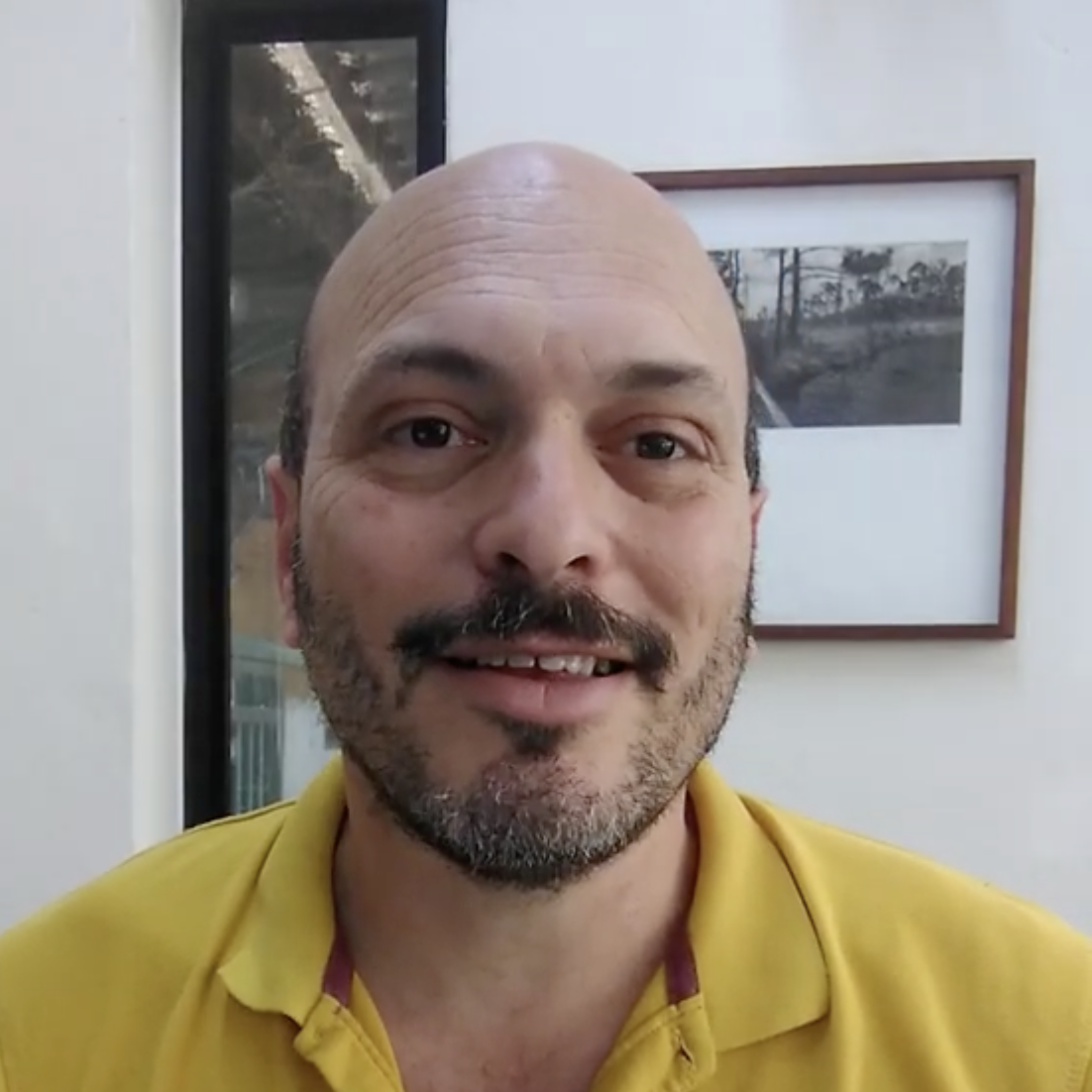 Baroch
Baroch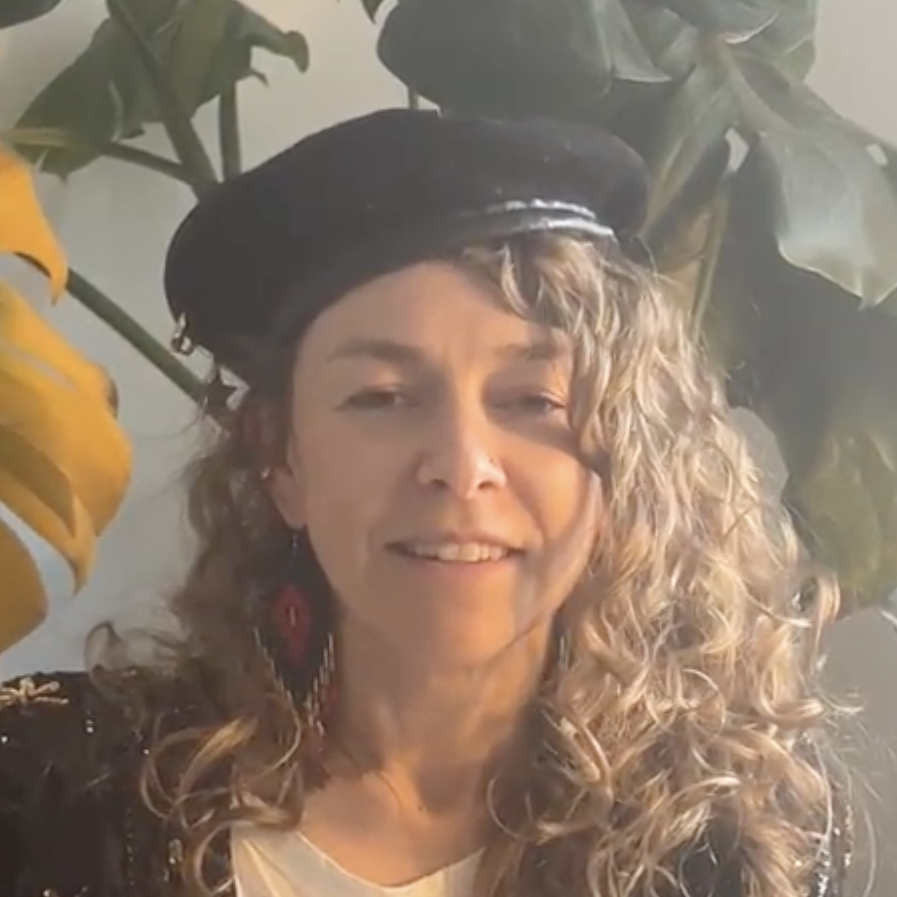 Erin Kiez
Erin Kiez Gabriel Muscalu
Gabriel Muscalu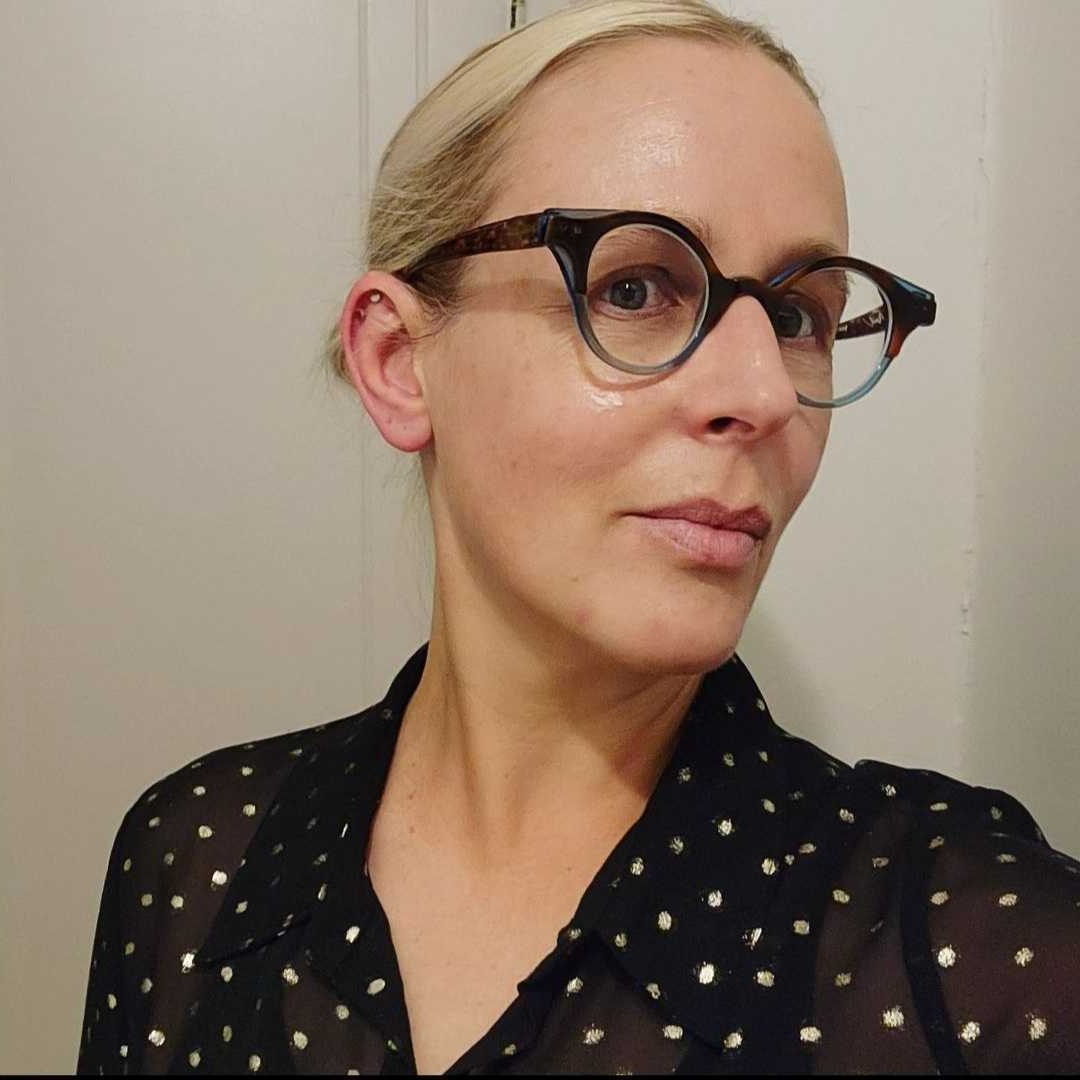 kbot
kbot Linus Höök, Caroline Bergmann & Britta Kronacher
Linus Höök, Caroline Bergmann & Britta Kronacher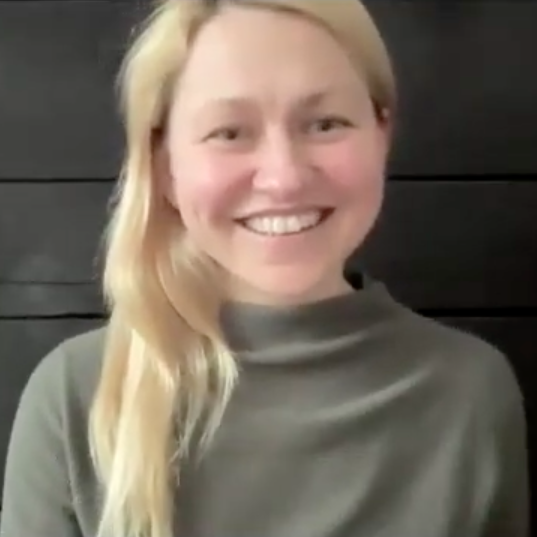 Pille Heido
Pille Heido Stuart Mangrum
Stuart Mangrum Vinegar Joe
Vinegar Joe







